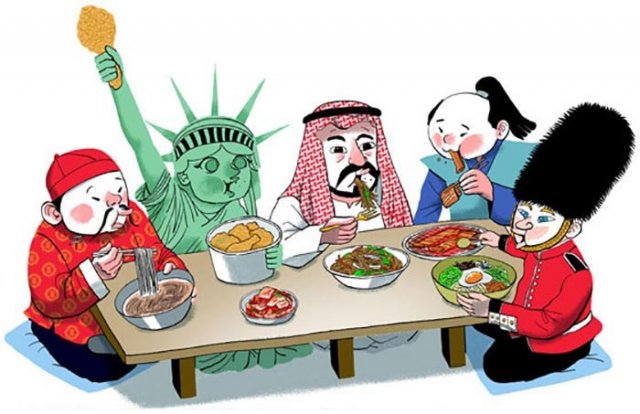More Foreigners Savvy of Korean Food
Published on | Source
Awareness of Korean food among foreigners has increased markedly in recent years with a majority of visitors having tried it before arriving in Korea and some coming here to taste it in situ.
Advertisement
A survey on 1,094 foreign visitors last year by the Korean Food Promotion Institute showed 64.4 percent already went to Korean restaurants in their home country, while 85.8 percent said they were satisfied with them.
Other data shows the rising popularity of Korean food around the world. According to the Ministry of Agriculture, Food and Rural Affairs, the number of Korean restaurants overseas increased 3.3-fold from 9,253 in 2009 to 30,227 in 2017. The number of Korean restaurants in hotels abroad also increased from 37 to 123 over the same period.
The institute surveyed 9,600 people in 16 major cities around the world last year (600 people per city) and 93.3 percent said they found Korean food delicious. The only city where satisfaction among residents came in below 90 percent was Tokyo at 82 percent. Respondents in New York showed a 94.3 percent level of satisfaction, up markedly compared to 2011's 34.5 percent.
The growing popularity is attributed not just to the popularity of K-pop and Korean TV dramas. Surveys show that foreigners feel Korean food is healthy and appreciate the different ways it is cooked.
Chung Hae-kyung at Hoseo University said, "Korean food is prepared by roasting and frying, which is familiar to foreigners, but also stir-fried, marinated and steamed, resulting in a wide range of menu options. And a lot of foreigners feel Korean food is healthy because of fermented dishes like soybean paste and kimchi".
Korean food is more popular in China and Southeast Asia than in Europe, the U.S. and Latin America. The survey showed an average of 63.1 percent went to a Korean restaurant at least once, with numbers especially high in Dubai (95.1 percent), Beijing (83.3 percent), Jakarta (82.2 percent) and Bangkok (80.8 percent). In contrast, the numbers were low where people are patriotic about their own food like Tokyo (27.8 percent) and Rome (39.8 percent).
The most-popular Korean dish was bibimbap or rice with assorted vegetables (37 percent), followed by chicken (27.5 percent), bulgogi (22.9 percent), jeongol or stew (20 percent) and japchae or stir- stir-fried cellophane noodles (17.8 percent).
Global awareness of Korean food appears to be increasing steadily, but experts say there is still a lot more that needs to be done. It remains low compared to Chinese and Japanese food. Also, some foreigners are turned after trying it at a low-quality restaurant.
Lee Eun-jung at Hankyong National University said, "There are a lot of limitations when it comes to the standardization of taste, level of cleanliness and service at Korean restaurants around the world".
